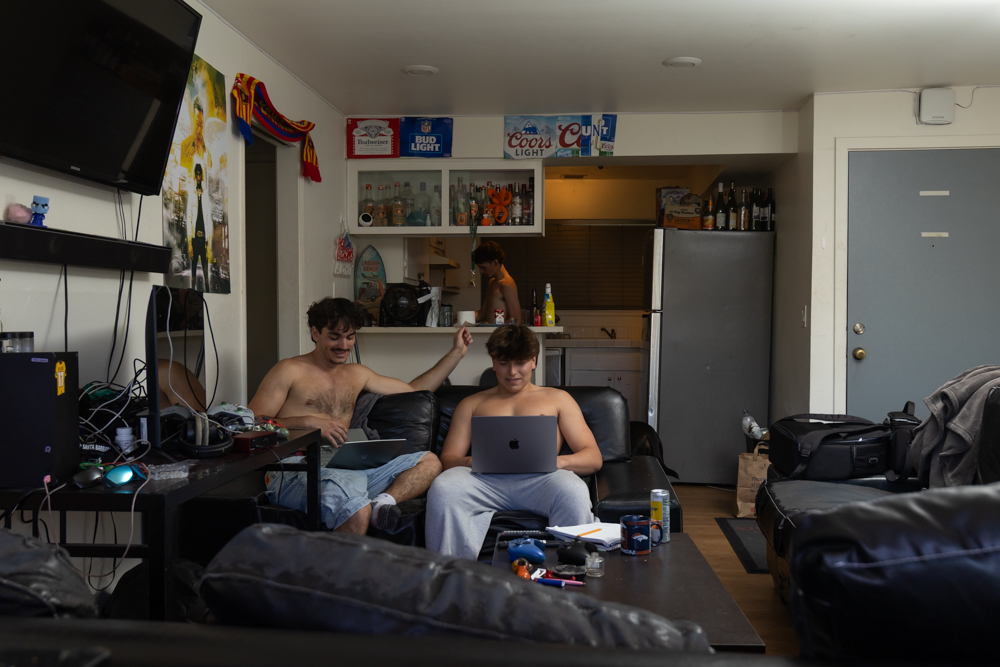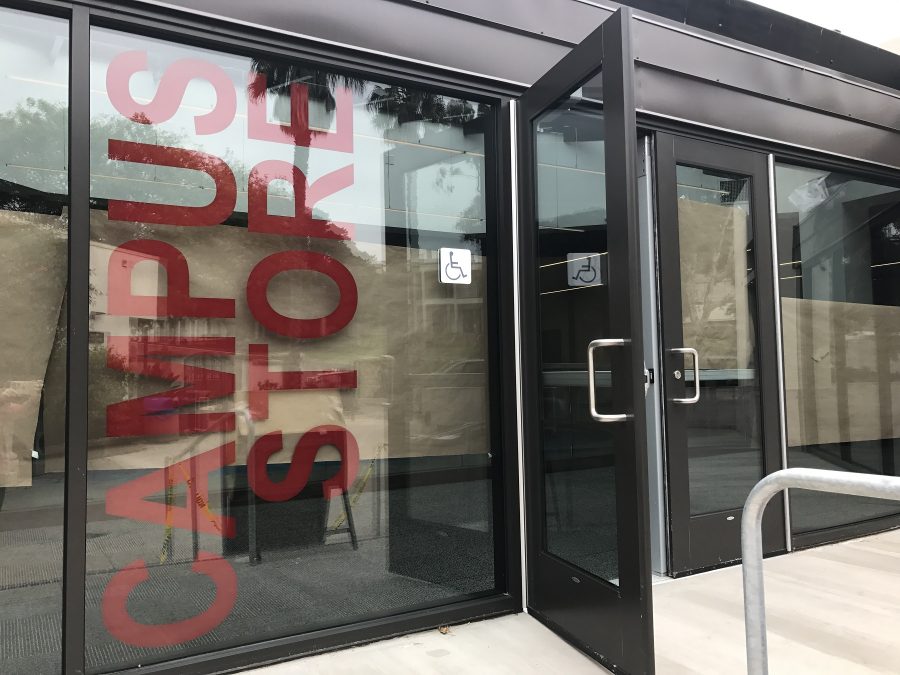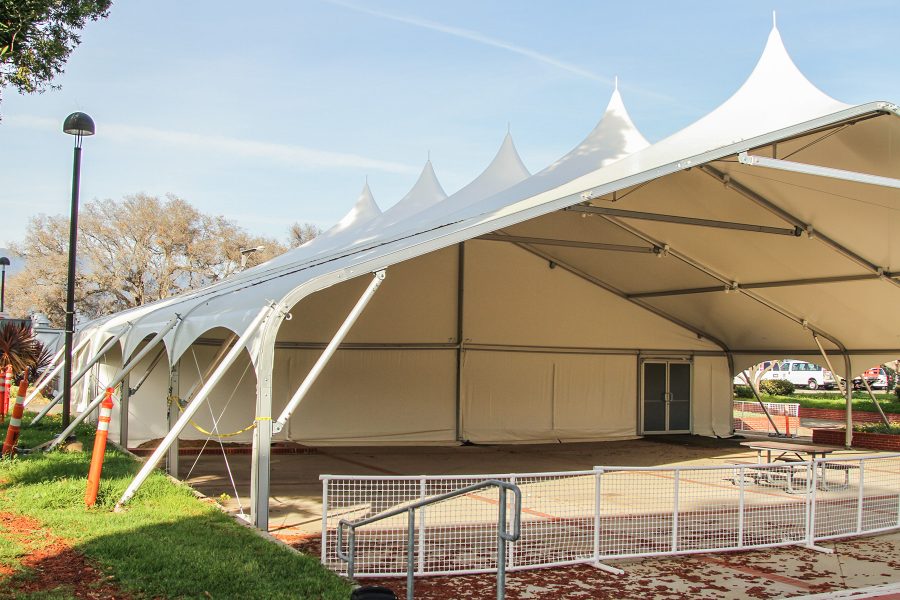Cold titanium retractors, clamps, bore saws and scissors pile high in their drawer as neighboring tweezers work meticulously, manipulating human flesh. Floss-like, elastic strings extend until the last is pulled, freeing itself from beef jerky slabs of muscle.
Elbow-deep in dead organs, one couldn’t seem more alive. Smiling eyes peer through small, black-rimmed glasses, as the peppered haired professor explains the unappetizing topics that lab students have to bring home to dinner.
“They’ll be eating spaghetti and say, ‘We saw a cadaver‘s testicles today’,” the teacher said.
The touch of a cadaver may be cold and lifeless, but Assistant Professor Barry Tanowitz’s passion and humor burns strong through his Human Anatomy and Physiology courses at City College. He also coordinates a dissecting program.
“It’s like “Forest Gump”, he said. “A box of chocolates. You open it up and you never know what you’re going to get.”
His dedication toward the biological sciences extends back to before age 12, in his Northeast Ohio backyard, all the way through higher education and graduate work at UCLA, UCSC and UCSB.
“He’s always enthusiastic and makes coming to class really easy,” former student Tracy Wood said. “Being able to see everything, hands on … it’s amazing because everything you see is in your own body.”
However, cadavers aren’t cheap. Including transportation and removal they can price up to $3,500 per body. The bodies are brought up from UC Irvine, through the Willed Body Program, where 70, 80 and 90-year-olds have donated their remains to science.
“It wouldn’t be possible without the support of Administration, who understands the value,” Tanowitz said. “It’s something that at first, you might think is a ‘wow’ factor, but it’s honestly vital.
“There’s no substitute for hands-on learning.”
Hands-on, minds-on, eyes-on, ears-on and nose-on, his dissecting team gets to experience this first-hand.
“It’s like being punched in the face when you open the bag,” said Chris Dahl, a member of the team. “Skinning is like a Sudoku puzzle.”
The work done in the cadaver lab is highly structured and strictly supervised. Tanowitz doesn’t take that part lightly.
“I consider myself a rigorous teacher,” he said with his eyebrows raised and scrunching together. “Often times, students mistake hard for rigorous.”
Each person is assigned a body part and 400 hours is tediously spent clipping, snipping and cleaning the body. If worked on alone, Tanowitz could complete one in 200 hours.
“The anticipation is much worse than the reality,” Tanowitz, the husband and father of two, said. “Once you’re around it for awhile, it’s not so unusual.
“There are things that make it really human: fingers and toes. You kind of go ‘Wow’, that’s not your best feature…it’s kind of wild,” he said.
While working alongside shelves lined with jars labeled “anatomical miscellaneous,” alongside pink buckets filled with dissected waste, on yellow, shriveled, tagged, Lysol-smelling bodies, there is a reminder that these educational models are well, real. Fingernails. Painted Fingernails. One cadaver recently had florescent pink nails.
“The woman we have in there now,” Tanowitz said, “She has French tips.”
Tanowitz used to “go shopping for cadavers” while attending graduate school.
“It was kind of like the dry cleaners…tracks, bodies in bags, hooked,” Tanowitz explains. “The bodies were close enough that you had to go sideways.”
Instead of having a hearse transport the cadavers, like today, he would remove the backseat of a station wagon and tape up the back windows.
One day, as they were making their way up the 405 freeway, the car broke down. They were stuck in rush hour traffic, in the median of the road, with a body in the back, until an officer arrived on scene. “Before you get all excited,” Tanowitz recalls telling the officer, “…we have a dead body in the car.” The cop’s hand shifted to his gun.
After showing their papers, stopping traffic and hooking up the car to a tow truck, they thought it was over. It was, until the tow truck driver found out what he was towing and unhitched everything and took off.
So with years of experiences—both awkward and educational—a question remains: Will he donate his body to science?
“I’m undecided as to whether I would….”



![Milton Alejandro Lopez Plascencia holds a flag showcasing the United States and Mexico on Feb. 7 in Santa Barbara, Calif. “It’s heartbreaking to see what is happening all across the country,” Lopez Plascencia said. “I [want] my voice to be heard by the community.”](https://www.thechannels.org/wp-content/uploads/2025/05/MGSImmigration-1-1200x800.jpg)


![The new Dean of Social Science, Fine Arts, Humanities and English, Eric Hoffman beams on May 2 in Santa Barbara, Calif. "My major professor in college [inspired] me," Hoffman said. "You can really have a positive impact on people's lives in education."](https://www.thechannels.org/wp-content/uploads/2025/05/MGSHoffman-2-1200x800.jpg)




